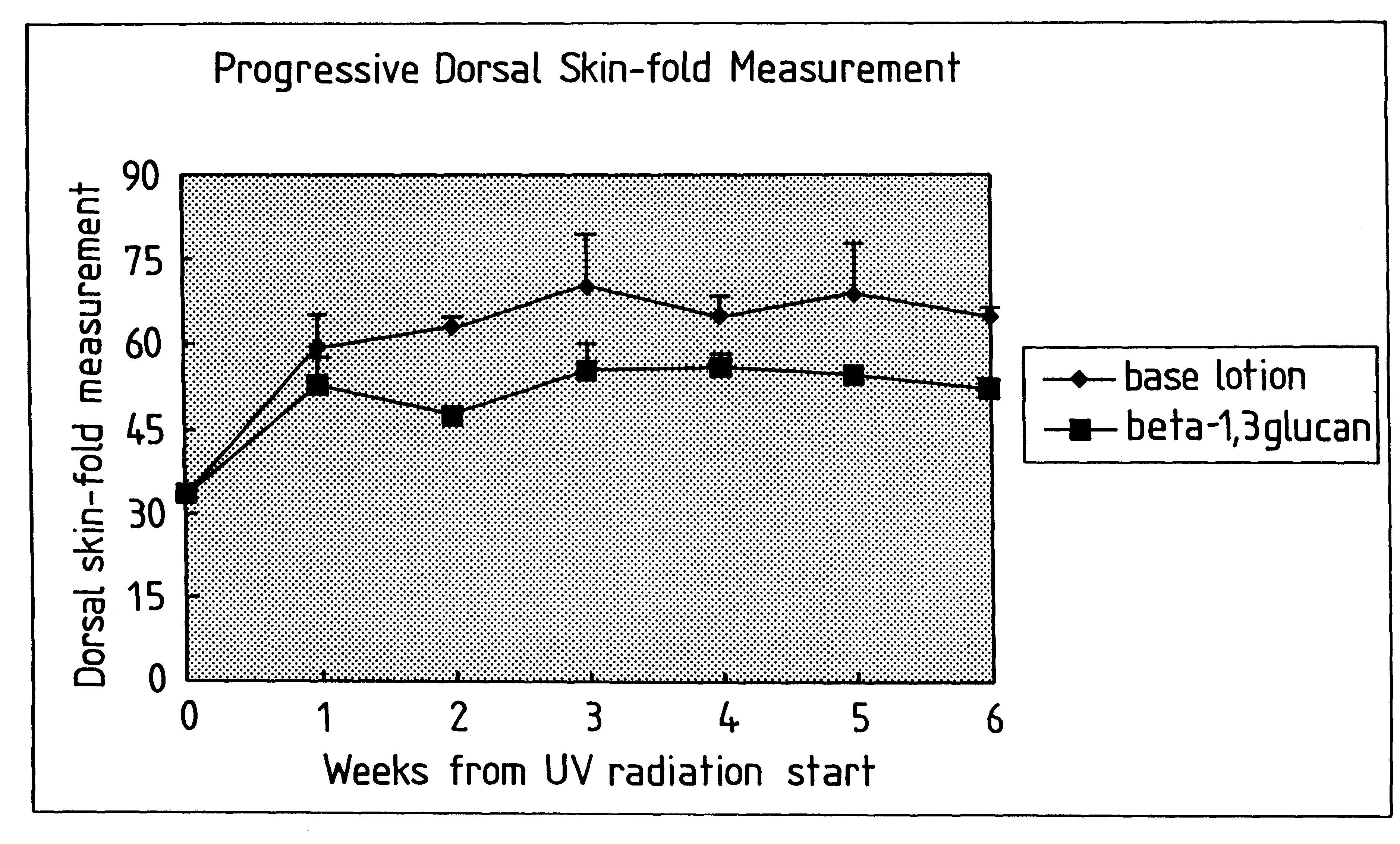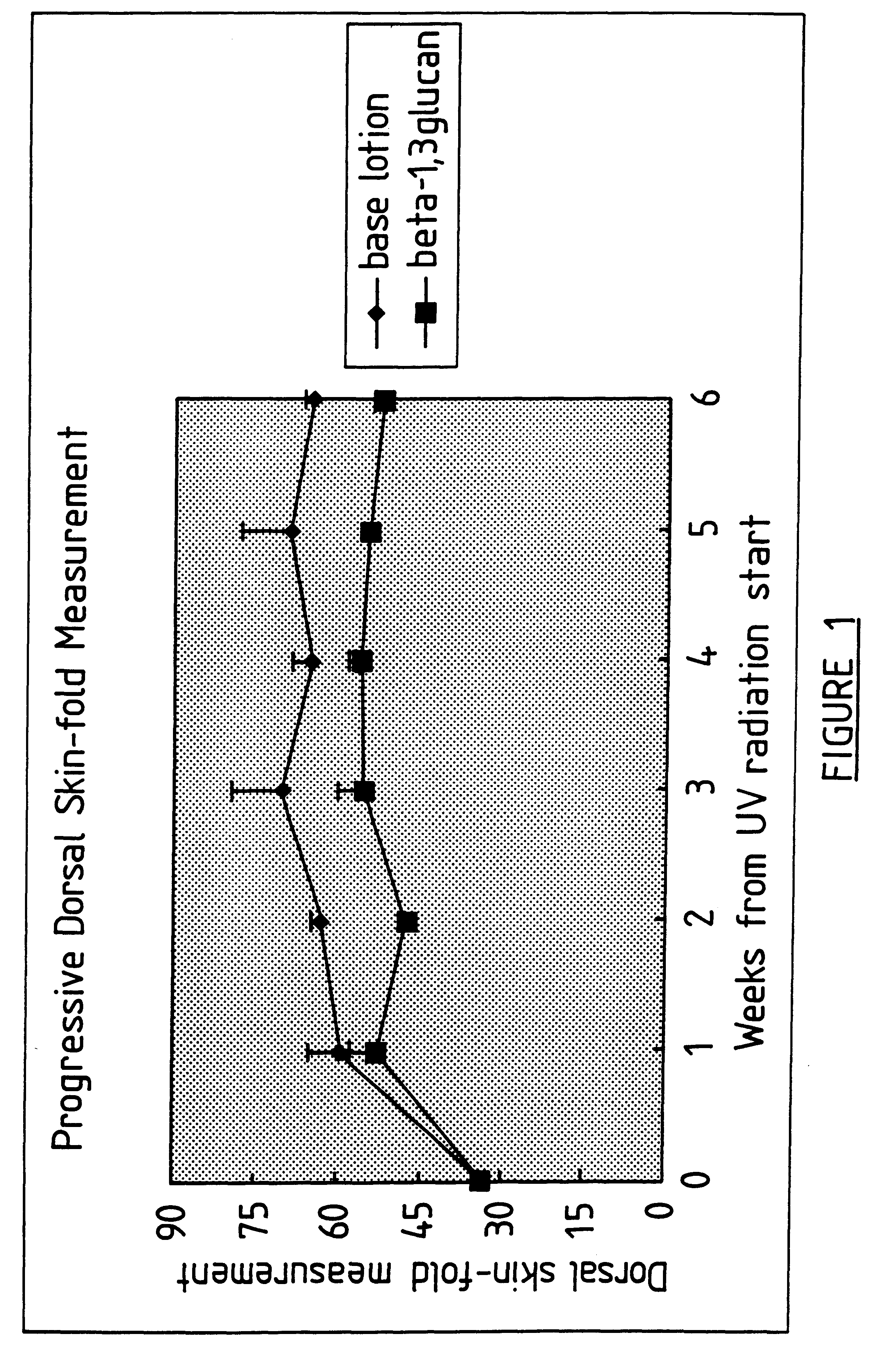Process for glucan preparation and therapeutic uses of glucan
a technology of glucan and glucan powder, which is applied in the field of glucan preparation and therapeutic use of glucan, can solve the problems of poor yield, disadvantageous prior art methods for the production of microparticulate glucan in one or more respects, and less than 5% w/w
- Summary
- Abstract
- Description
- Claims
- Application Information
AI Technical Summary
Benefits of technology
Problems solved by technology
Method used
Image
Examples
example 1
Microparticulate glucan is prepared as follows:
A 400 g sample of commercial Saccharomyces cerevisiae in dry form is added to four liters of 4% w / v sodium hydroxide and heated to 100.degree. C. for one hour with vigorous stirring. The suspension is allowed to cool to between 45.degree. C. and 50.degree. C. before the lysed yeast cells are separated from the alkaline hydrolysate by centrifugation at 800 g for ten minutes. The lysed yeast cells are resuspended in a fresh batch of three liters of 3% w / v sodium hydroxide and boiled for 15 minutes. Following separation by centrifugation, the lysed yeast cells are resuspended in a fresh batch of two liters of 3% w / v sodium hydroxide and boiled for 15 minutes followed by standing at 70.degree. C. for 16 hours. Following separation by centrifugation, the lysed yeast cells are resuspended in water and boiled for 10 minutes. The latter step is repeated once. Following centrifugation, the lysed yeast cells are resusended in a fresh aliquot of 2...
example 2
Microparticulate Sc-glucan is prepared as follows:
A 400 g sample of commercial Saccharomyces cerevisiae in dry form is added to four liters of 4% w / w sodium hydroxide and heated to 100.degree. C. for one hour with vigorous stirring. The suspension is allowed to cool to between 45.degree. C. and 50.degree. C. before the lysed yeast cells are separated from the alkaline hydrolysate by centrifugation at 800 g for ten minutes. The lysed yeast cells are resuspended in a fresh batch of three liters of 3% w / v sodium hydroxide and boiled for 15 minutes. Following separation by centrifugation, the lysed yeast cells are resuspended in a fresh batch of two liters of 3% w / v sodium hydroxide and boiled for 15 minutes followed by standing at 70.degree. C. for 16 hours. Following separation by centrifugation, the lysed yeast cells are resuspended in water and boiled for 10 minutes. The latter step is repeated once. Following centrifugation, the lysed yeast cells are resusended in a fresh aliquot o...
example 3
A protocol for the preparation of minimally-polymerised, soluble Sc-glucan according to the present invention is as follows.
Microparticulate Sc-glucan is produced as detailed in Example 2. Ten g of this material is suspended in 100 mL sterile 5% NaOH solution and stirred gently for two hours at 5.degree. C. (giving a pH around pH 13). The suspension then is diluted 1:1 in sterile, distilled water and then filtered through a 1 u membrane to remove undissolved particulate material. The pH of the filtered solution then is adjusted to 10 by the addition of SM HCl and then dialysed against 2 L distilled water (pH 10) in a Pelicon system using a 10.000 D limiting membrane. The solution then can be sterilised by passage through a 0.45.mu. membrane and the pH of the solution may be adjusted as desired. The soluble glucan so produced is useful as a pharmaceutical product.
Gel permeation chromatography (Waters Styragel HR 5E.RTM. column, effective molecular weight range of 10.times.10.sup.4 to...
PUM
| Property | Measurement | Unit |
|---|---|---|
| Fraction | aaaaa | aaaaa |
| Angle | aaaaa | aaaaa |
| Angle | aaaaa | aaaaa |
Abstract
Description
Claims
Application Information
 Login to View More
Login to View More - R&D
- Intellectual Property
- Life Sciences
- Materials
- Tech Scout
- Unparalleled Data Quality
- Higher Quality Content
- 60% Fewer Hallucinations
Browse by: Latest US Patents, China's latest patents, Technical Efficacy Thesaurus, Application Domain, Technology Topic, Popular Technical Reports.
© 2025 PatSnap. All rights reserved.Legal|Privacy policy|Modern Slavery Act Transparency Statement|Sitemap|About US| Contact US: help@patsnap.com


